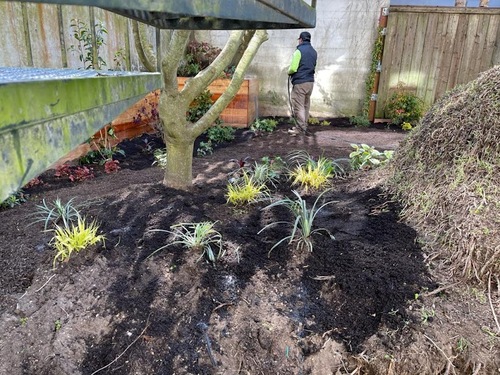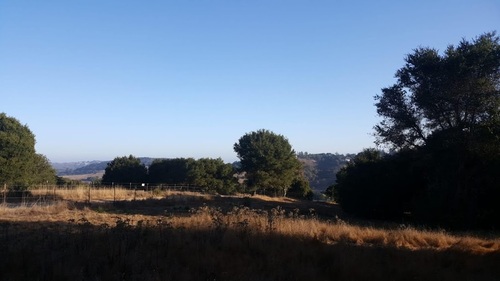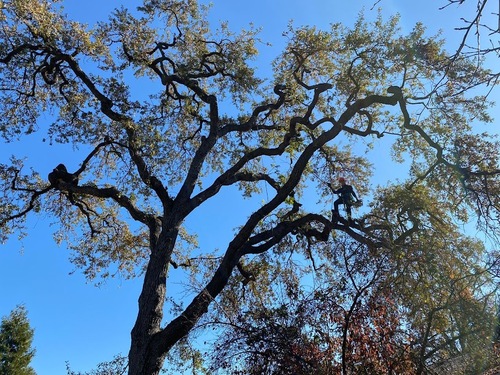What is Sudden Branch Drop Syndrome?
Understanding Sudden Branch Drop Syndrome: A Comprehensive Guide to Tree Safety
Maintaining a beautiful and healthy landscape is a priority for many homeowners, but nothing can be as disconcerting as a seemingly healthy tree randomly dropping branches. This phenomenon, known as Sudden Branch Drop Syndrome, raises questions and concerns about the safety of your property. In this comprehensive guide, we will delve into what Sudden Branch Drop Syndrome is, explore its causes and effects, identify the trees most susceptible to it, and provide valuable tips on how to manage and mitigate the risks associated with this enigmatic tree condition.
Defining Sudden Branch Drop Syndrome

A Large Broken Tree Branch – Photo by Marta Wroblewska on Pixabay
Sudden Branch Drop Syndrome , also referred to as sudden limb failure or summer branch drop, is a perplexing issue that typically occurs during the summer months, affecting seemingly healthy trees. Unlike what one might expect, the falling branches are not a result of wind or storms; they can occur even on calm days.
Here are some key facts to help you understand this problem:
- Location of Breakage: The branches affected by this syndrome tend to break approximately three feet out from the tree’s trunk due to their weight.
- Safety Concerns: The reach of the branch drop can extend up to about twelve feet away from the trunk, posing a significant safety issue for anything or anyone below.
- Tree Age Factor: Older trees are more prone to this issue compared to younger trees.
- Unknown Causes: Although professionals have been studying this syndrome, no exact cause has been determined. Some experts speculate that it may be related to moisture levels, while others suggest a bacterial link.
- Recurring Problem: Once a tree has experienced Sudden Branch Drop Syndrome, it is likely to occur again in the future.
Trees Prone to Sudden Branch Drop Syndrome
While any tree can potentially be affected by this syndrome, certain tree species are more susceptible to experiencing this issue, including:
Oak Trees
Oak trees are among the most prone to Sudden Branch Drop Syndrome. Their large, heavy branches are particularly vulnerable. Oak trees are a common sight in many landscapes and are cherished for their grandeur and shade. However, these majestic trees can also pose a significant risk if not properly cared for.
When dealing with oak trees, it’s essential to be aware of the specific challenges they present regarding Sudden Branch Drop Syndrome. Oak trees are known for their wide canopies and extensive branches. These branches, while providing ample shade, can become unwieldy and heavy, increasing the risk of branch failure.
Beech Trees
Beech trees , with their broad canopies, are also at a higher risk of experiencing branch drop. Beech trees are a popular choice in landscaping due to their attractive, glossy foliage and smooth gray bark. However, their dense canopies can become especially problematic during the summer months when Sudden Branch Drop Syndrome is most prevalent.
Proactive measures, such as regular inspections and pruning, are essential to maintain beech trees’ safety and health.
Elm Trees
Elm trees , known for their expansive branches and lush foliage, frequently encounter this issue. Elm trees are known for their graceful, arching branches and unique serrated leaves. These characteristics, while aesthetically pleasing, contribute to the susceptibility of elm trees to Sudden Branch Drop Syndrome.
Regular pruning, especially in early spring, can help mitigate the risks associated with elm trees.
Eucalyptus Trees
Eucalyptus trees are characterized by their tall, slender trunks and long branches, making them susceptible to branch drop. These trees are known for their aromatic leaves and rapid growth. Eucalyptus trees can be especially challenging when it comes to Sudden Branch Drop Syndrome, as their branches often grow quite long and can become quite heavy.
Sycamore Trees
Sycamore trees are prone to Sudden Branch Drop Syndrome, possibly due to their extensive canopy and heavy limbs. Sycamore trees are admired for their striking white bark and large, broad leaves. Unfortunately, these large leaves and branches can be prone to sudden breakage, creating a potential hazard.
Regular pruning and maintenance, including the removal of dead or weakened branches, are crucial for preserving the safety of sycamore trees.
Identifying these tree species on your property will help you remain vigilant and take necessary precautions to mitigate the risks.
Managing Sudden Branch Drop Syndrome

A Worker Performing Yard Maintenance
While there is no foolproof way to prevent Sudden Branch Drop Syndrome due to its elusive causes, there are several proactive measures you can take to manage and reduce the risks associated with this phenomenon:
Regular Tree Care and Pruning
Regular tree care and pruning are essential to spot potential issues before they escalate into serious problems. Consider hiring a professional arborist to ensure that your trees receive proper maintenance. Pruning can help remove riskier branches, reducing the chances of them falling unexpectedly.
Mulching, Fertilizing, and Watering
To enhance the overall health of your trees and reduce their susceptibility to Sudden Branch Drop Syndrome, make sure to consistently mulch , fertilize, and water them. Healthy trees are better equipped to withstand potential issues.
Professional Assessment
If you notice a branch on the ground from one of your seemingly healthy trees, it’s imperative to consult a professional arborist . They can assess the situation, identify the issue, and recommend steps to eliminate the risk of it happening again. Prompt action is crucial to safeguard your property and loved ones.
Arborist Now: Your Tree Care Experts in the San Francisco Bay Area
For those residing in the San Francisco Bay Area, Arborist Now is your trusted partner when it comes to tree care. If you observe branches falling sporadically in your yard, do not hesitate to contact us. Our expert team is well-equipped to ensure that your trees do not pose further risks to your home and family. We will work with you to determine the best course of action, providing peace of mind and preserving the beauty of your landscape.
Environmental Impact and Tree Preservation

A Beautiful Field and Trees Under a Blue Sky
Beyond the immediate safety concerns posed by Sudden Branch Drop Syndrome, there is an essential environmental dimension to consider. Trees play a critical role in maintaining ecological balance and enhancing the quality of our surroundings. It is crucial to understand how this syndrome affects the ecosystem and what we can do to preserve our precious trees.
Environmental Impact
The sudden shedding of branches can have negative consequences for the environment. Falling branches may damage other vegetation, affect wildlife habitats, and disrupt the overall ecological equilibrium. Moreover, the loss of large branches can impact a tree’s ability to photosynthesize, reducing its contribution to oxygen production and carbon dioxide absorption.
Tree Preservation
Tree preservation is a shared responsibility. As caretakers of our natural surroundings, it is essential to safeguard these vital organisms.
Here are some actions you can take to contribute to tree preservation:
- Support conservation organizations that advocate for tree protection and reforestation efforts.
- Educate yourself and others about the significance of trees and the environmental challenges they face.
- Participate in local tree-planting initiatives and volunteer with tree-related community projects.
By taking an active role in tree preservation, you can help ensure that the beauty and benefits of trees endure for future generations.
Legal and Liability Aspects
As a property owner, it is essential to be aware of the legal and liability aspects associated with trees on your land. While Sudden Branch Drop Syndrome may seem like a random and uncontrollable occurrence, it’s crucial to understand your responsibilities in maintaining tree safety on your property.
Legal Obligations
Laws regarding tree safety and liability can vary from one location to another. It’s advisable to consult local regulations and ordinances to determine your legal obligations as a property owner. Some areas may require regular inspections of trees to assess their health and safety.
Liability and Insurance
In the unfortunate event of a branch falling from one of your trees and causing damage or injury, liability may come into play. If you have homeowner’s insurance, it is essential to review your policy to understand whether it covers tree-related incidents and damages.
It’s prudent to maintain a record of tree care and inspections, as this documentation can be valuable in case of any legal or insurance issues.
Tree Safety for All Seasons

A Large, Healthy Tree with Sprawling Branches
Sudden Branch Drop Syndrome is most commonly associated with the summer months, but tree safety is a year-round concern.
Here are some additional considerations to ensure the health and safety of your trees in every season:
Winter Tree Safety
During the winter months, the weight of snow and ice can place stress on tree branches. Regularly inspect your trees for signs of damage and weakness, and consider pruning before winter storms to reduce the risk of branch breakage.
Spring and Fall Tree Care
Spring and fall are excellent times for tree maintenance. Consider pruning during these seasons to remove dead or weak branches. Proper pruning helps promote new growth and enhances the overall health of your trees.
Conclusion
In conclusion, while Sudden Branch Drop Syndrome remains a mysterious tree condition with unknown causes, proactive tree care and professional assistance can go a long way in managing and mitigating the risks associated with it. By identifying the trees most susceptible to this syndrome and following the recommended best practices, you can ensure the safety and longevity of your cherished landscape.
For residents in the San Francisco Bay Area, Arborist Now is here to support you in maintaining your trees and addressing any concerns related to Sudden Branch Drop Syndrome. Tree safety is not only a seasonal concern but a year-round commitment to preserving the natural beauty of our environment. Remember that the health of your trees not only impacts your property but also contributes to the broader ecosystem and our collective responsibility to protect it.
Originally posted on August 11, 2019


